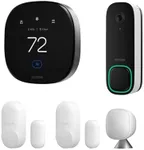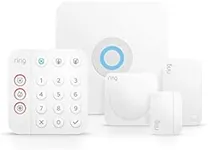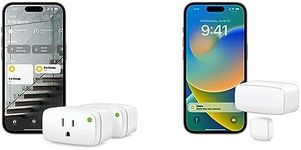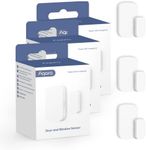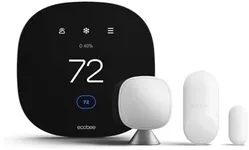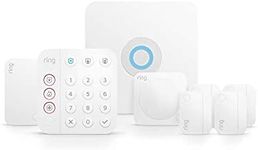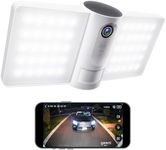Buying Guide for the Best Door Sensor For Smart Homes
Choosing the right door sensor for your smart home is crucial for ensuring security and convenience. Door sensors can alert you when a door is opened or closed, integrate with other smart home devices, and provide peace of mind. To make an informed decision, consider the following key specifications and understand how they align with your needs.Type of SensorDoor sensors come in different types, such as contact sensors, motion sensors, and vibration sensors. Contact sensors are the most common and consist of two parts: one attached to the door and the other to the frame. When the door opens, the connection between the two parts breaks, triggering an alert. Motion sensors detect movement near the door, while vibration sensors sense vibrations caused by the door opening. Choose the type based on your specific needs; contact sensors are ideal for straightforward door monitoring, while motion and vibration sensors offer additional security features.
ConnectivityDoor sensors can connect to your smart home system via different methods, such as Wi-Fi, Zigbee, Z-Wave, or Bluetooth. Wi-Fi sensors are easy to set up and offer direct internet connectivity, but they may consume more power. Zigbee and Z-Wave sensors are energy-efficient and create a mesh network for reliable communication, but they require a compatible hub. Bluetooth sensors are simple and energy-efficient but have limited range. Choose connectivity based on your existing smart home setup and the range you need.
Integration with Smart Home SystemsEnsure the door sensor you choose is compatible with your smart home ecosystem, whether it's Amazon Alexa, Google Home, Apple HomeKit, or another platform. Compatibility allows seamless integration and automation, such as triggering lights or alarms when the door is opened. Check the sensor's specifications for supported platforms and choose one that fits your current or planned smart home system.
Power SourceDoor sensors can be battery-powered or wired. Battery-powered sensors are easy to install and offer flexibility in placement but require periodic battery replacement. Wired sensors are more reliable and don't need battery changes, but installation can be more complex and may require professional help. Consider your preference for ease of installation versus long-term maintenance when choosing the power source.
Range and SensitivityThe range and sensitivity of a door sensor determine how effectively it can monitor the door's status. Range refers to the distance between the sensor and the hub or receiver, while sensitivity indicates how well the sensor detects door movements. Higher range and sensitivity are beneficial for larger homes or doors with heavy usage. Assess your home's layout and the specific door's usage to determine the appropriate range and sensitivity for your needs.
Installation ProcessConsider the ease of installation when choosing a door sensor. Some sensors come with adhesive backing for simple, tool-free installation, while others may require screws and more complex setup. If you're not comfortable with DIY installations, look for sensors with straightforward installation processes or consider professional installation services. Your comfort level with installation can guide your choice here.
Additional FeaturesSome door sensors offer additional features like tamper alerts, temperature monitoring, or integration with security cameras. Tamper alerts notify you if someone tries to disable the sensor, adding an extra layer of security. Temperature monitoring can be useful for detecting environmental changes. Integration with security cameras allows for visual verification of door activity. Consider which additional features might be beneficial for your specific security needs.
